The episode of WTF Happened to This Horror Movie? covering Night of the Comet was Written by Emilie Black, Narrated by Jason Hewlett, Edited by Jaime Vasquez, Produced by John Fallon, and Executive Produced by Berge Garabedian.
1984, the year of many interests and fears for Americans, from fears of a nuclear attack still remaining to a love-hate relationship with consumerism, American films explored teenage life in all its aspects. Some of these films were more memorable and on point for life and fears of the American teenager from living in the valley in Valley Girl, survival like Red Dawn and The Zero Boys, and a whole lot more; the mid-1980s were filled with teen cinema, and some of it was definitely on the dark side. Night of the Comet (get it HERE) was definitely on the bleaker side of things while mixing teenage life, consumerism, potential alien invasion, mutation, and evil scientists; this film had it all. It also had one banging soundtrack. For 1984 that is.
Night of the Comet takes the idea of what if two teenage girls were the only survivors after the passing of a comet turned every one to sand. The Belmont sisters, by luck in their destiny, found themselves in metal rooms, one a projection booth, the other a garden shed, overnight when a much-awaited comet flew by Earth, turning everyone to dust. The two of them soon realize they seem to be alone, so they head into the city to see if it’s as empty as the suburb. Once there, they find a radio signal that brings them to the station, which is where they start to wait out for other survivors. Soon, Hector, a truck driver, stumbles into the station, and they make friends. Then they gradually find out how many others have survived and whether or not they can be trusted. It’s a post-apocalyptic world, and no one is safe, really.
The film itself seems like a limited-audience movie, but one watches, and it becomes clear that it’s more than that, much more than that, in fact. The film here has some fascinating ideas, and it has a solid lead cast making it easy to get into the story. Of course, the side of mutant zombies and the soundtrack don’t hurt, either. The film is entertaining and well done, and it knows how to make the most of its budget.
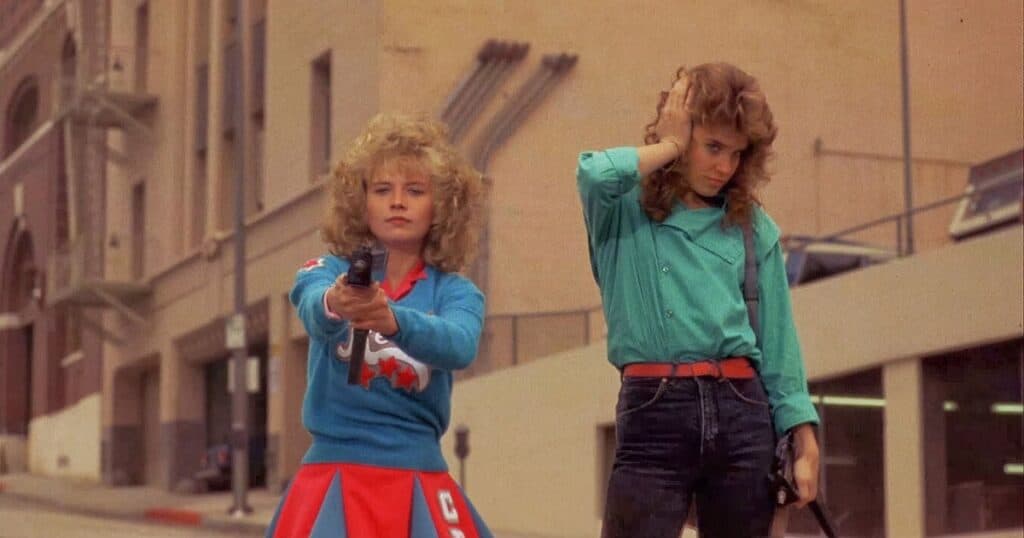
Speaking of budget, Night of the Comet was made on what some movies spend on crafty in a week! Officially, the film’s budget was $700,000 USD, not even a million. These days, that’s not even enough to buy a house in Los Angeles, and very few movies are made for this amount unless they are super indies or micro-budget films. A horror-sci-fi-teen-possibly-parody film with setups in the suburbs, downtown Los Angeles, a radio station, a department store, and a research facility that has scenes with downtown LA bring completely empty? You have to be talking $10-15 million these days. On a lot of budgets, this may be doable with a warehouse, a few friends’ houses, and a whole lot of CGI. And this film didn’t rely on CGI or green screens. The film was shot on location, except for some of the outdoors at the research facility, which was shot with miniatures and forced perspective. This film made the most of its measly budget and you can really see it all on the screen.
Speaking of which, to help with the budget, writer-director Thom Eberhardt had the cast react to anything unplanned happening in character so that they could get it on film and work with that if it worked for the film in the end. The cast was very aware of the budgetary restrictions, and one good example of this in the scene where Kelli Maroney is supposed to be slapped by Sharon Farrell; her reaction was not on point with the fake slaps, so to save time and money, she had Farrell actually slap her, which gave the result we see on screen early on in the film.
Another money-saving bit was that the scenes in the department store were shot at night, thus saving them the money they would have had to shell out to close the store during daylight hours. Then there’s the fact that they didn’t fully close downtown Los Angeles to get those eerie empty shots of the area, they simply had the traffic held back at red lights and leg go at calculated intervals. This led to the look they needed here. The film is a school on how to shoot on a budget and make it look like more.
The cast here is a big part of the fun. While some of them were known back in 1984, none of them were supermassive stars or A List stars, which means that they were familiar faces without costing a ton of money. Catherine Mary Stewart, who plays lead Regina Belmont here, was becoming a rather familiar face with credits including The Last Starfighter, 150 episodes of Days of Our Lives, Knight Rider, The Beach Girls, Nighthawks, and even The Apple, to name a few. She was a more than familiar face for those who watched television a lot and was already making a name for herself in films. Playing her sister Samantha, Kelli Maroney didn’t have quite as many credits behind her, but her credits included Fast Times at Ridgemont High and Slayground as films, so a teen film and a drama film with a very horror title, one of which a smaller hit that has since become a massively loved film and the other lesser-known. Her television credits at the time included Ryan’s Hope and Celebrity. She didn’t have a ton of titles, but she was about to become quite known to horror fans for credits with Chopping Mall, Scream Queen Hot Tub Party, and a bunch more. She may not have been a big name at the time, but her appeal has endured and helped Night of the Comet reach cult status. The rest of the cast has folks like Robert Beltran as Hector, Mary Woronov as Audrey White, Geoffrey Lewis, Peter Fox, John Achorn, and a bunch more. As mentioned, it’s not filled with any member of the A-List, but the film has a solid cast that can sell the story perfectly here.
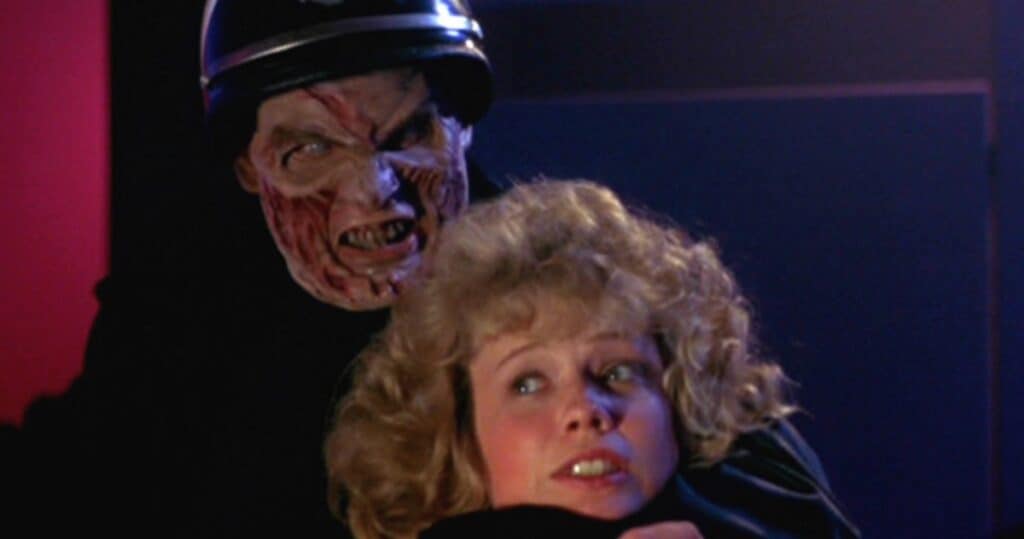
The film’s whole crew also clearly helped make the film more affordable, from the director’s car in the street as background, the local cops who helped with traffic control showing up as motorcycle cops in the film, actress Catherine Mary Stewart doing most of her stunts whenever possible, photos in the film are of the director standing in as the girls’ dad and his wife and kid standing in Hector’s family, the radio station was filmed on a set made in an abandoned warehouse, a reshot scene used two panels moved by hand to mimic an elevator, etc. There was so much done to cut costs as much as possible without causing problems in the film.
Of course, the look of the film helps a lot in making it look a bit more expensive with the eerie red light over Los Angeles, the way the characters each had a color type assigned to them, and the use of real reactions whenever something went oddly, the film worked by having a ton of planning, yet accepting and working with the unplanned whenever it happened.
Did that turn into a massive box office? Well, yes and no. The film’s total box office in the US and Canada was just under $14.5 million USD which is a more than respectable amount of money to be made on a $700,000 budget, even if one factor in the extra costs not often discussed such as marketing and distribution. Even if those were in the few millions, which is doubtful given that it was 1984, the film would have still more than doubled, maybe even quadrupled, its budget at the box office. That is something most movies that aren’t massive tentpole releases would not be against at all.
Let’s take a look at how this little film that could manage to get such great totals at the box office. The film was released in American theaters on November 16th, 1984, pulling in over $3.5 million over its first weekend out. It stayed actively in theaters for six weeks, leading it to its $14.5 million theatrical run total. Was the film number one at the box office on its first release weekend? No, but it did more than respectably in the top ten coming in at number three, right behind the number one film Mission in Action starring Chuck Norris and number two film Oh God, You Devil! A film starring George Burns as both God and Satan. Right behind Night of the Comet, at number four, was The Terminator, you know, that little science-fiction film that no one remembers?
In terms of the same audience, there is a definite overlap with The Terminator, but also with A Nightmare on Elm Street, which was number six, and Silent Night, Deadly Night, just off of the top ten, at number twelve. This was indeed the mid-1980s, and it seemed like a hit movie or three were coming out each week; securing a spot in the top three for a $700,000 film seemed like an unachievable goal, yet here we are. The film did well in theaters, and then it was released on home video, where it found even more of its audience. Then, like a lot of films, it seemed to lay dormant for a while until it hit the nostalgia land, the convention circuit, which seemed to be the only place to buy the film on DVD for a while.
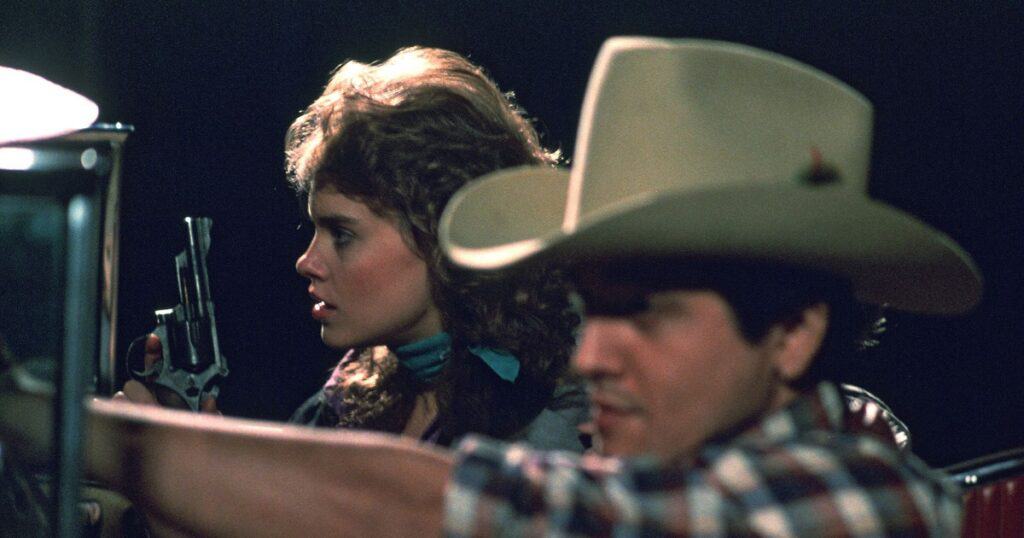
Of course, now, with all the nostalgia labels doing Blu-Ray rereleases, Night of the Comet was bound to come up, and it did. This means it’s now easier than it has been in a long time to get it in good condition, high definition, and with some decent extras. Count yourself lucky if you never had to look for 1980s classics and cult films at conventions, digging through boxes and boxes of various levels of quality releases that may or may not all have been legit to find the one copy available that weekend while four other people were doing the same. What this means here, children, is that looking for movies in the olden days was our version of going to school uphill both ways.
Now, there is another major factor in this film that seems to get discussed very little, and that is the soundtrack. It made a big difference on fans pushing them from liking the film to straight up loving the film. Did it contribute to its box office? Probably not as much as many other films, but it was still important. Also, that soundtrack rules. It’s a very 1980s mix of music from lesser-known artists; some of them had had some minor hits, but no one massive like Prince, Michael Jackson, Bruce Springsteen, Metallica, Van Halen, Sade, Run DMC, Madonna, U2, or The Smiths who were the top ten musical artists at the time.
However, the soundtrack is still fun to this day, and the songs by Thom Pace, Doug Kershaw, Bobby Caldwell, and Tami Holbrook, among others. The soundtrack wasn’t as big of a hit, but it was important because the film partially takes place in a radio station. Two fun tidbits relating to music here, in the station, Kelli Maroney’s Samantha tosses a copy of the Valley Girl soundtrack, which was the biggest soundtrack at the time. Also, this is pure speculation from information found online that has yet to be proven true, but it looks like a young LL Cool J is seen at a microphone in a crowd at the start of the film. As he has just been signed to Def Jam at the age of 16, so freezing the image where the rapper seems to appear, it really does look like a very young LL.
Night of the Comet was a big hit when the cost-to-box office comparison is made; the fact that it seemed to disappear for a while and is now a beloved cult classic somehow makes sense with how the home video and collector market evolved over the last few decades. It’s still a more-than-fun film with a great lead cast, and some fun bits that are so purely 1980s, they almost hurt. Night of the Comet takes place at Christmas time, by the way, so it is a Christmas movie.
A couple of the previous episodes of WTF Happened to This Horror Movie? can be seen below. To see more, head over to our JoBlo Horror Originals YouTube channel – and subscribe while you’re there!






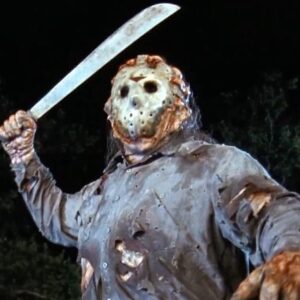



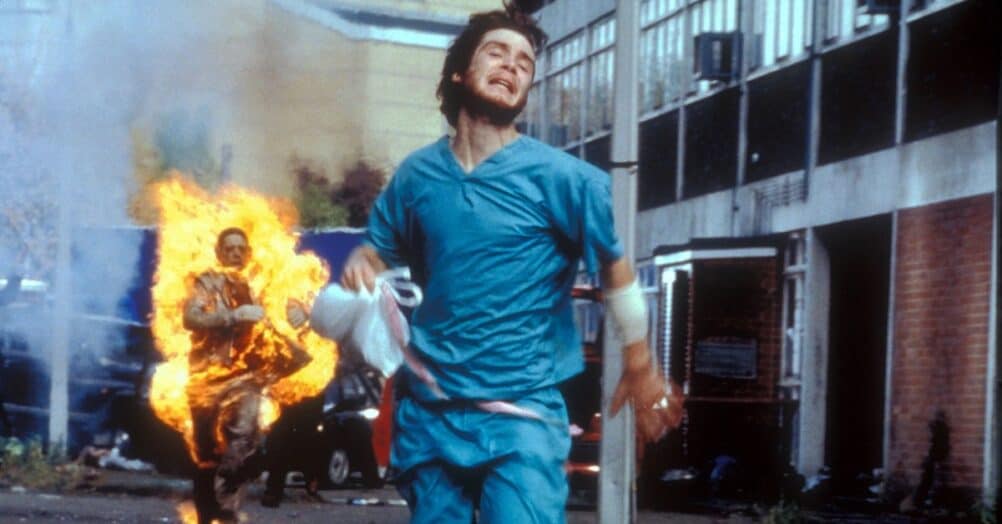





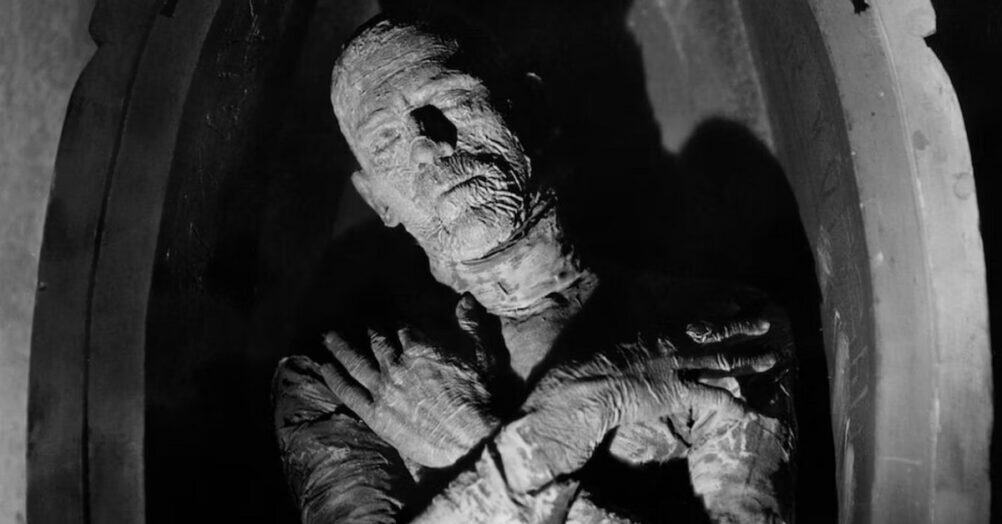
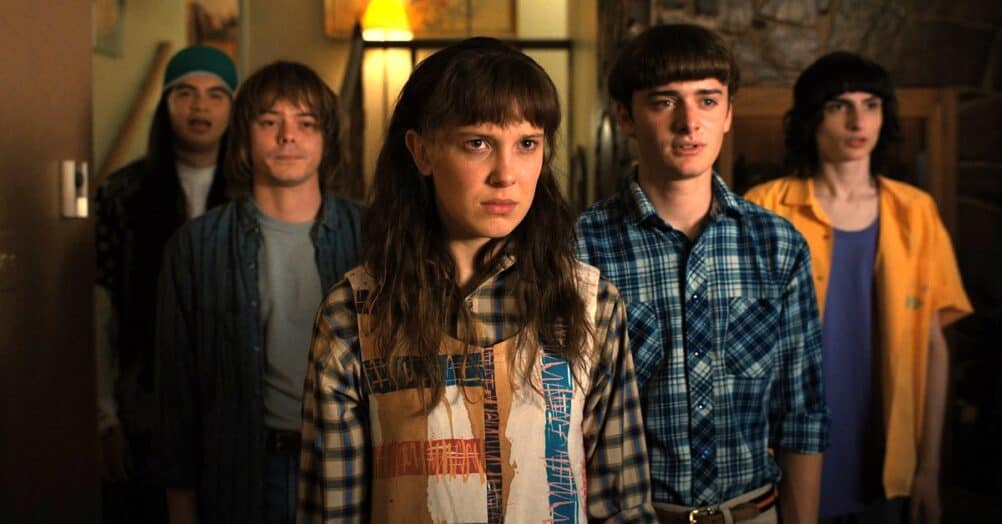

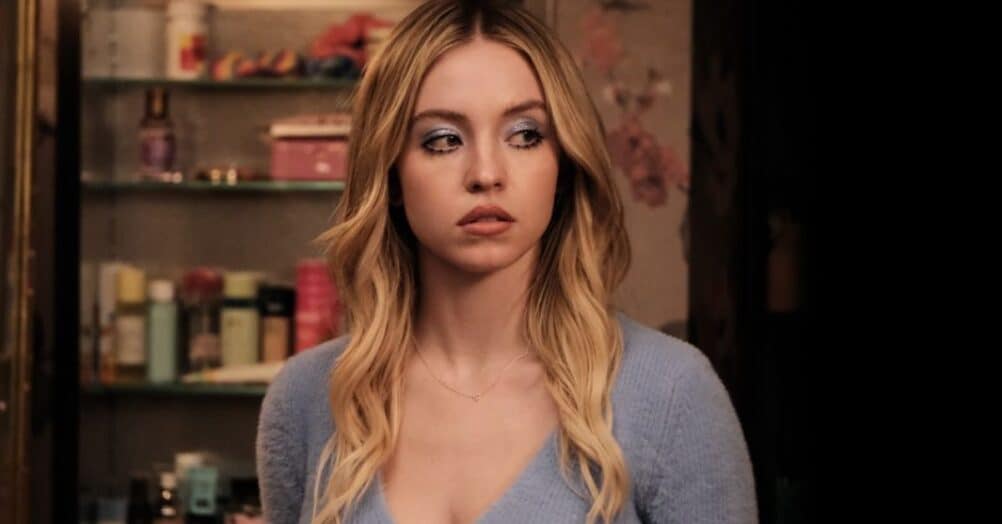
Follow the JOBLO MOVIE NETWORK
Follow us on YOUTUBE
Follow ARROW IN THE HEAD
Follow AITH on YOUTUBE